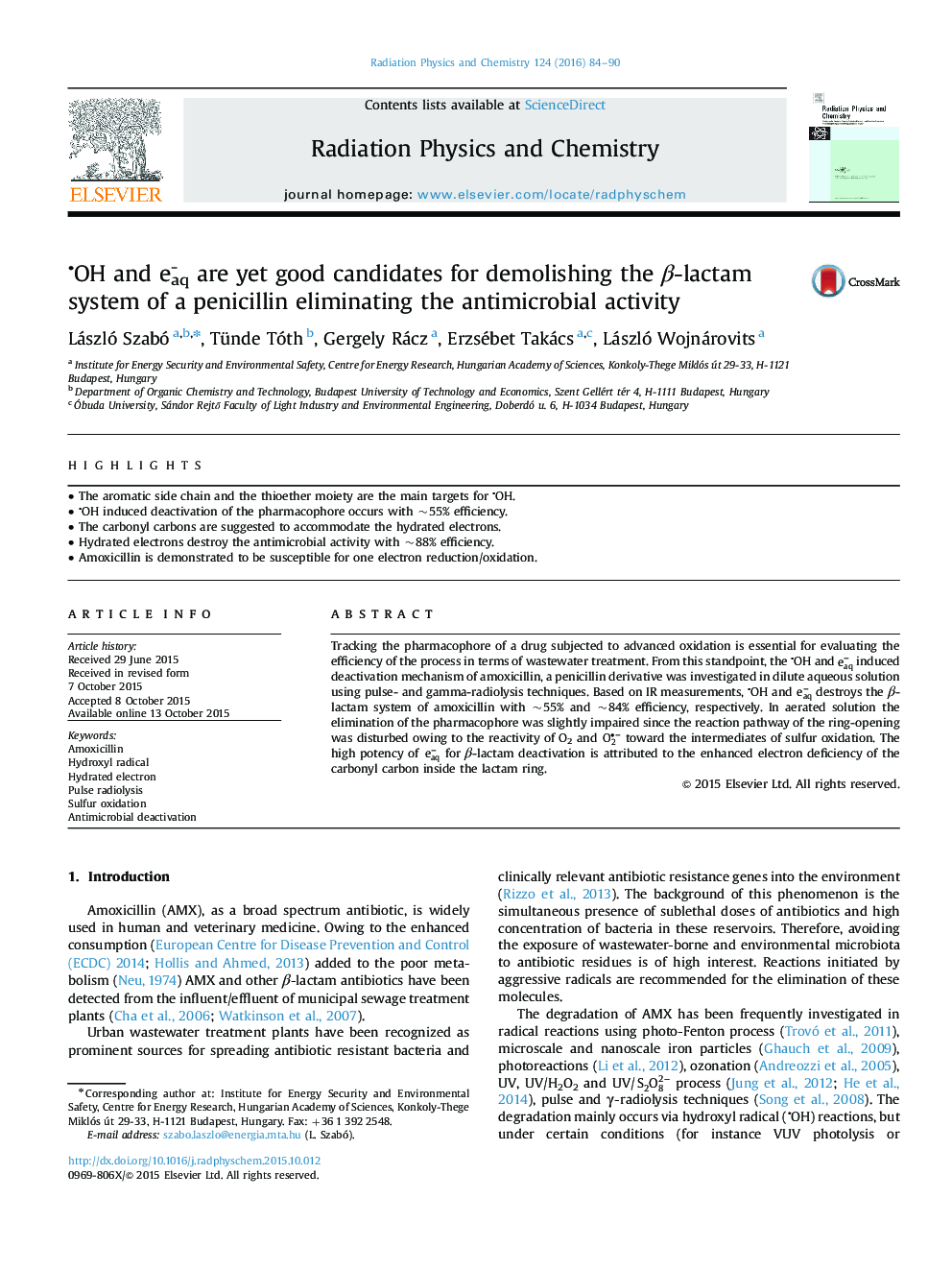| Article ID | Journal | Published Year | Pages | File Type |
|---|---|---|---|---|
| 1891023 | Radiation Physics and Chemistry | 2016 | 7 Pages |
•The aromatic side chain and the thioether moiety are the main targets for ∙OH.•∙OH induced deactivation of the pharmacophore occurs with ~55% efficiency.•The carbonyl carbons are suggested to accommodate the hydrated electrons.•Hydrated electrons destroy the antimicrobial activity with ~88% efficiency.•Amoxicillin is demonstrated to be susceptible for one electron reduction/oxidation.
Tracking the pharmacophore of a drug subjected to advanced oxidation is essential for evaluating the efficiency of the process in terms of wastewater treatment. From this standpoint, the ∙OH and eaq- induced deactivation mechanism of amoxicillin, a penicillin derivative was investigated in dilute aqueous solution using pulse- and gamma-radiolysis techniques. Based on IR measurements, ∙OH and eaq- destroys the β-lactam system of amoxicillin with ~55% and ~84% efficiency, respectively. In aerated solution the elimination of the pharmacophore was slightly impaired since the reaction pathway of the ring-opening was disturbed owing to the reactivity of O2 and O2•- toward the intermediates of sulfur oxidation. The high potency of eaq- for β-lactam deactivation is attributed to the enhanced electron deficiency of the carbonyl carbon inside the lactam ring.
